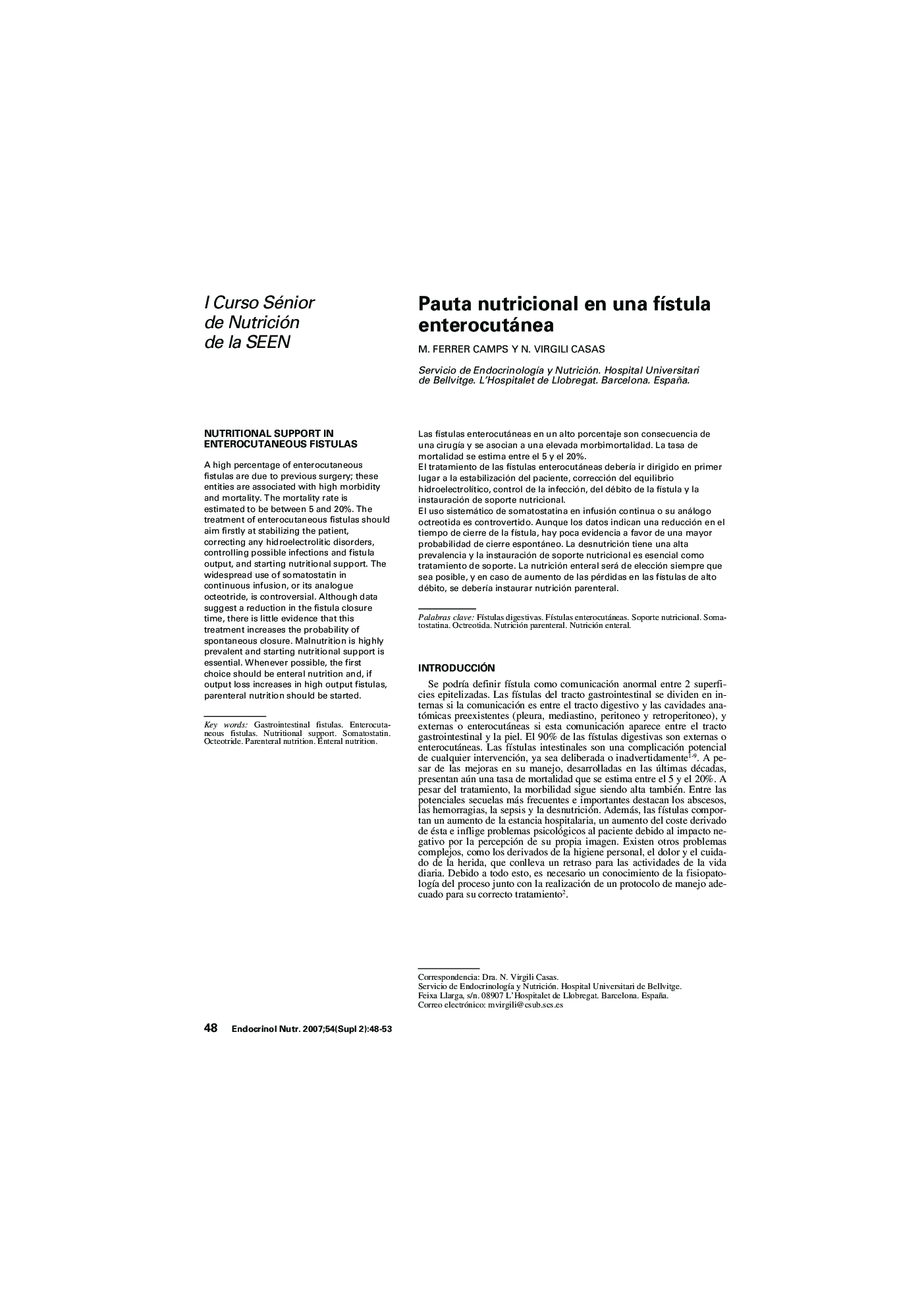| Article ID | Journal | Published Year | Pages | File Type |
|---|---|---|---|---|
| 2774575 | Endocrinología y Nutrición | 2007 | 6 Pages |
Abstract
A high percentage of enterocutaneous fistulas are due to previous surgery; these entities are associated with high morbidity and mortality. The mortality rate is estimated to be between 5 and 20%. The treatment of enterocutaneous fistulas should aim firstly at stabilizing the patient, correcting any hidroelectrolitic disorders, controlling possible infections and fistula output, and starting nutritional support. The widespread use of somatostatin in continuous infusion, or its analogue octeotride, is controversial. Although data suggest a reduction in the fistula closure time, there is little evidence that this treatment increases the probability of spontaneous closure. Malnutrition is highly prevalent and starting nutritional support is essential. Whenever possible, the first choice should be enteral nutrition and, if output loss increases in high output fistulas, parenteral nutrition should be started.
Keywords
Related Topics
Life Sciences
Biochemistry, Genetics and Molecular Biology
Clinical Biochemistry
Authors
M. Ferrer Camps, N. Virgili Casas,
